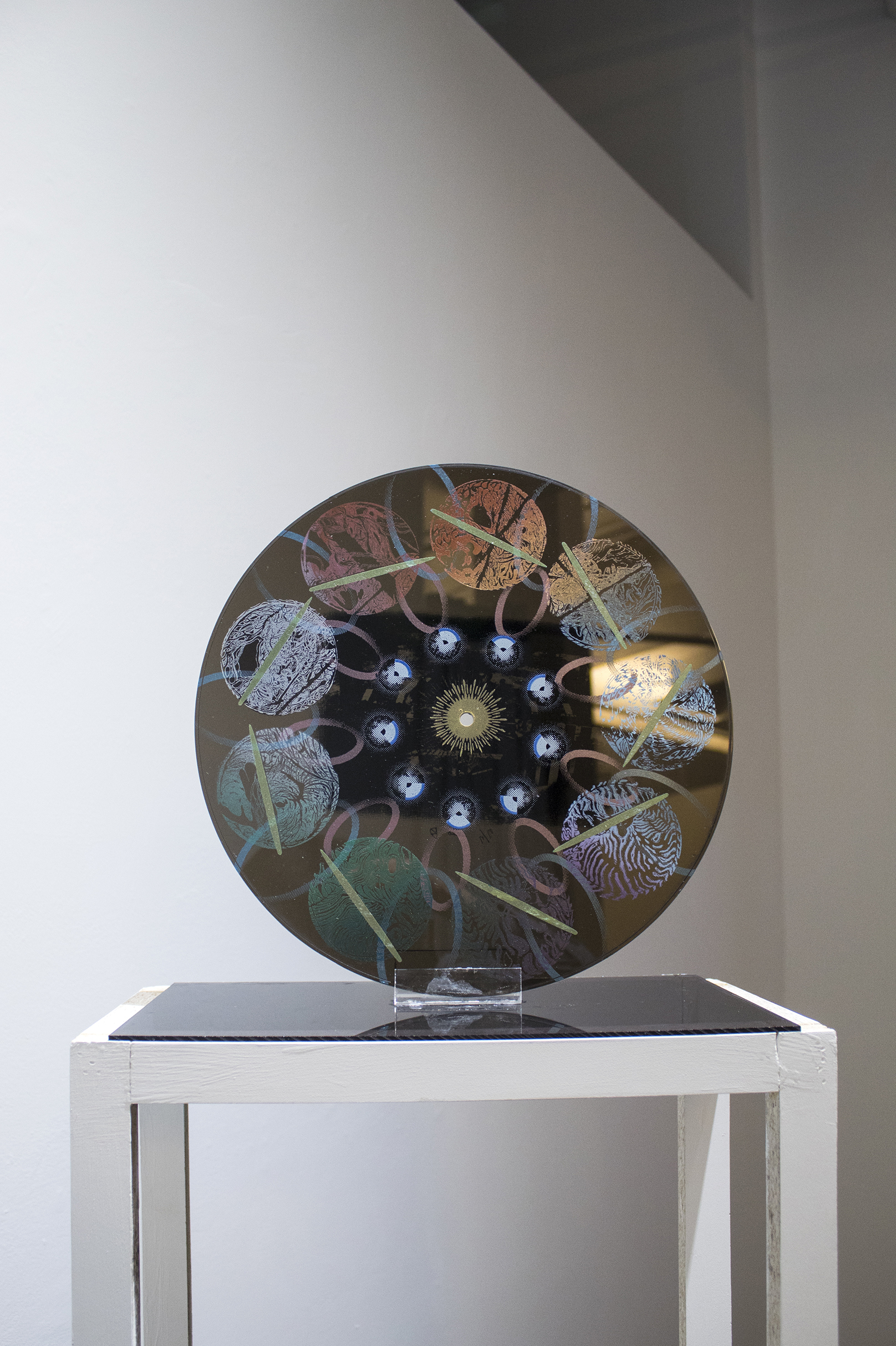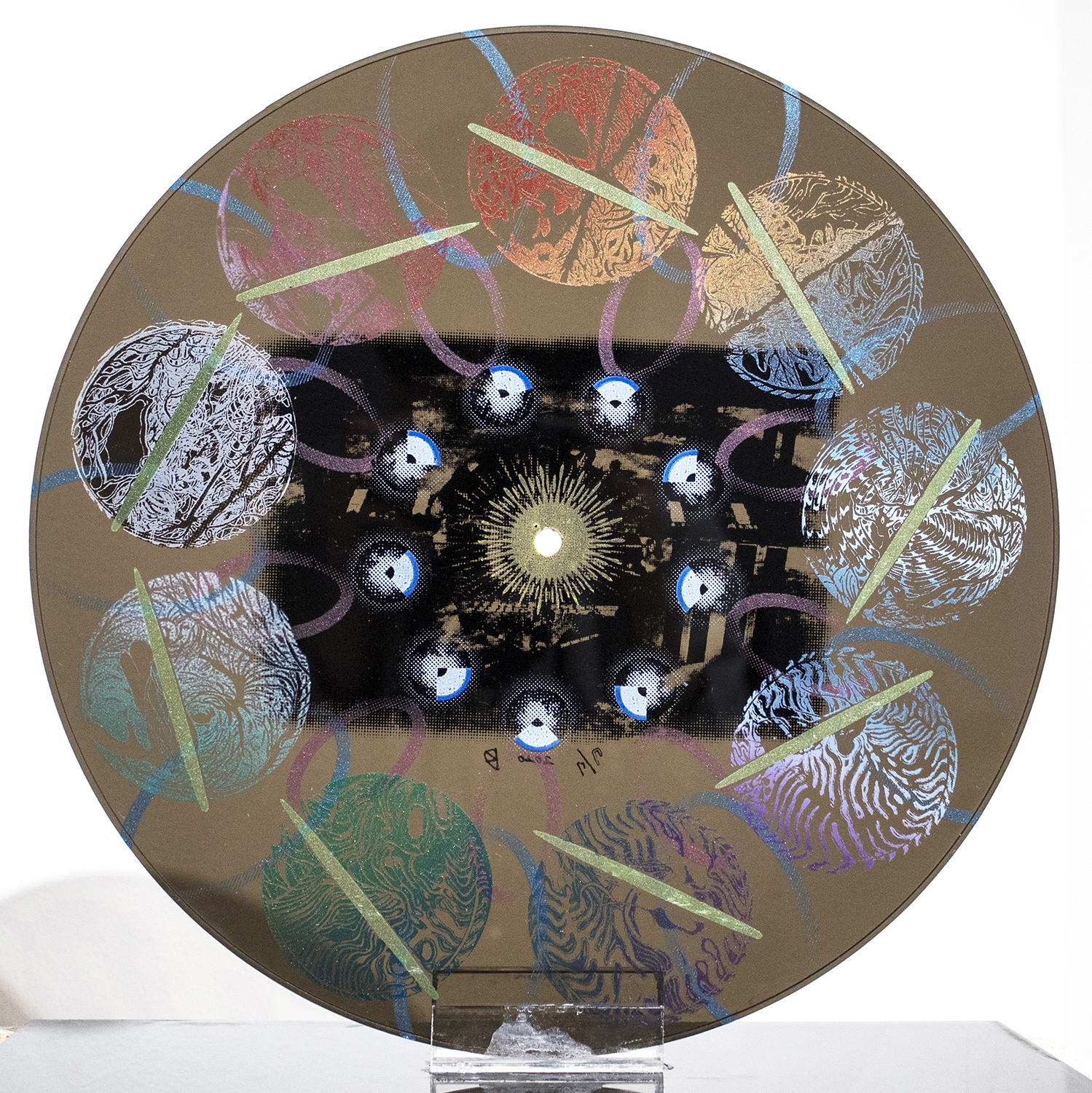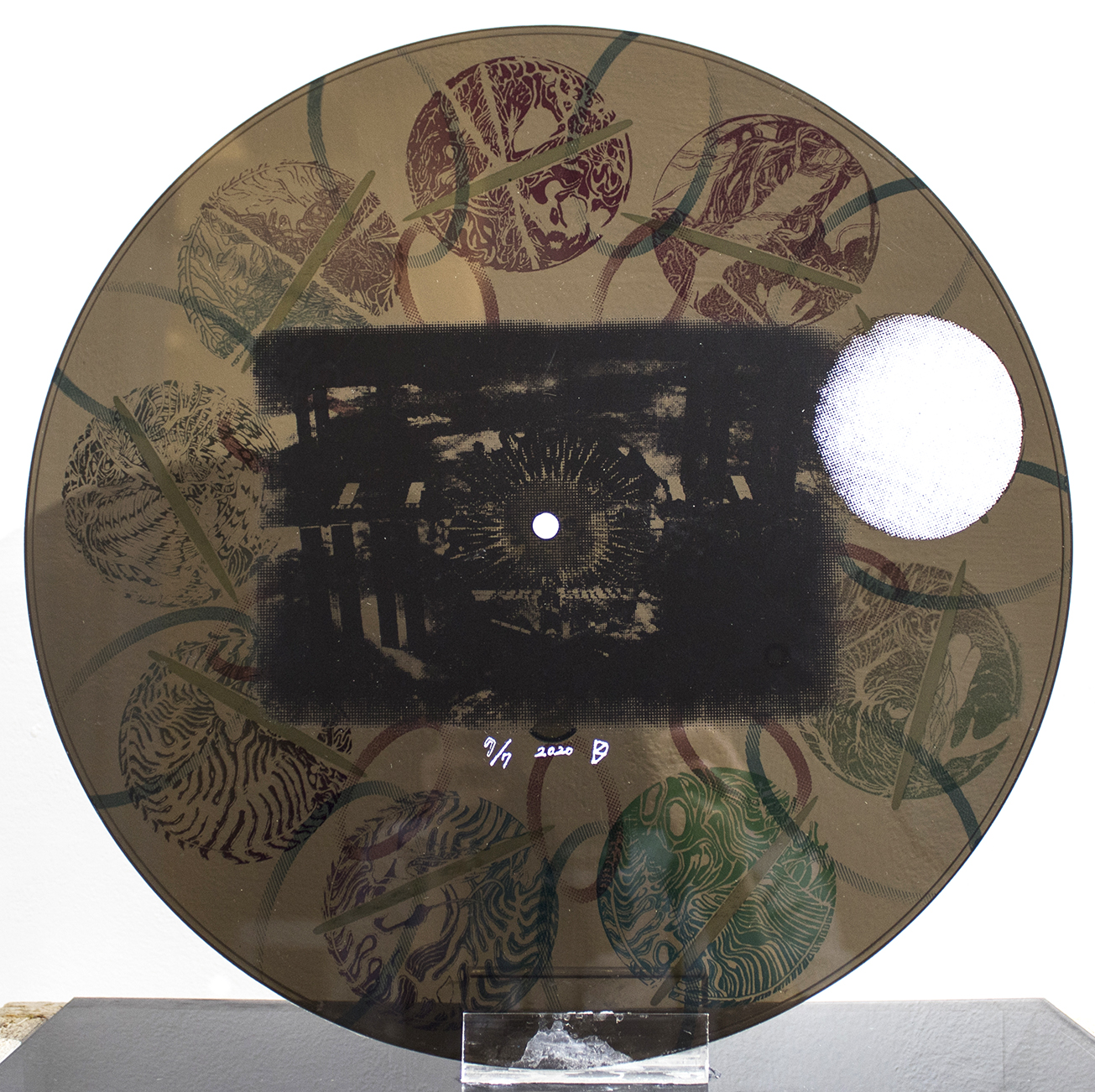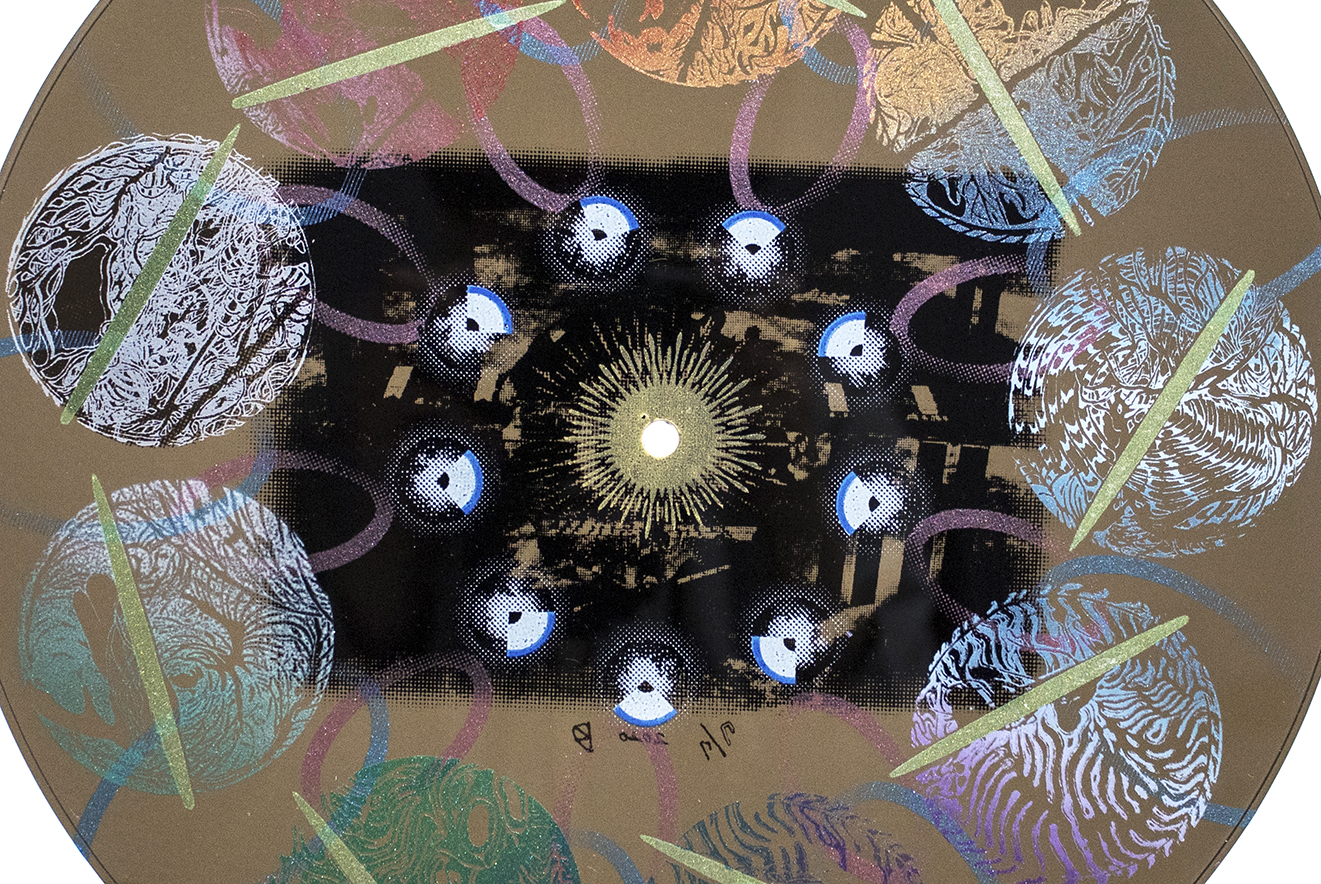Riddle II: Records
2019 - 2020 - 2022
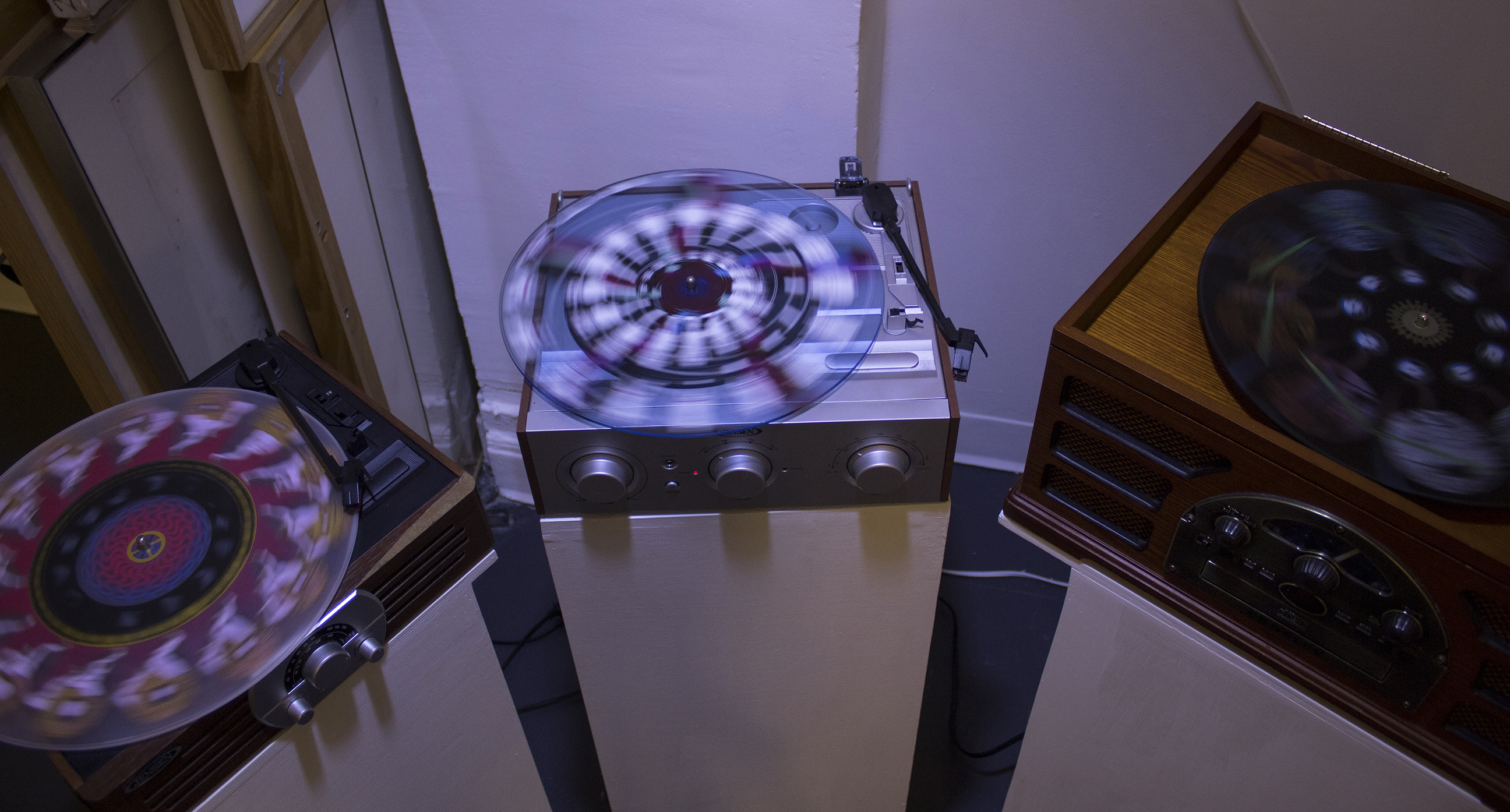
The Riddle series consists of five drawings (Riddle I), an installation (Riddle II: Records), and a digital animation (Riddle III).
Riddle II: Records is an installation that draws on the analogue animation technique known as the phenakistoscope. It features a circular mirror inscribed with the Sphinx’s riddle and three screen-printed disc-like objects activated on LP record players under a strobe light.
Each screen-printed object—Four Legs: Placenta, Two Legs: Exodus, and Three Legs: A Reverie to the Universe—depicts foundational conditions and major movements in human history, using imagery that symbolizes biological and cultural transmission, migration, and the imagination projected towards the Universe.
The format echoes the Voyager Golden Records launched in 1977, which carried sounds and images representing life and culture on Earth into space as a message to any potential extraterrestrial intelligence. Through these visual narratives, the work poetically unravels layers of collective history.
아날로그 애니메이션 기법을 참고하여 만들어진 세 개의 실크스크린 오브제와 메시지가 적힌 원형 거울로 이루어진 Riddle II: Records는 스핑크스의 문제와 맞물려 문화의 전승, 이주, 우주에 대한 공상 등 현재의 세계를 구성하고 있는 거대한 관념에 대한 이미지를 제시한다.
작업의 형태는 1977년에 발사된 보이저 우주선에 포함된 축음기 레코드인 보이저 골든 레코드를 차용하고 있다. 보이저 골든 레코드는 지구상의 생명과 문화의 다양성을 묘사하기 위해 선택된 소리와 이미지를 기록하여 외계 생명체에게 인류의 존재를 알리기 위해 만들어졌다.
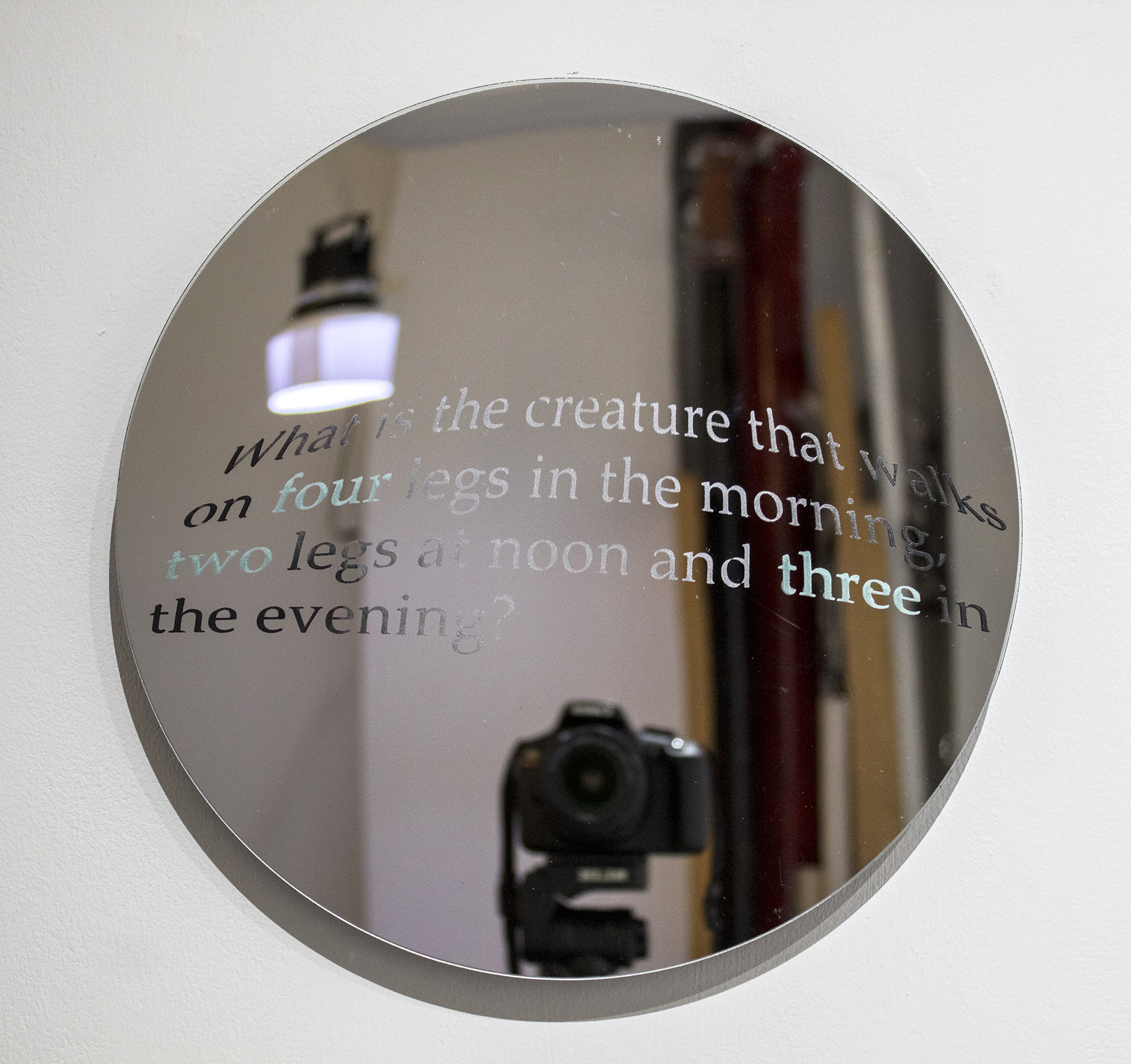


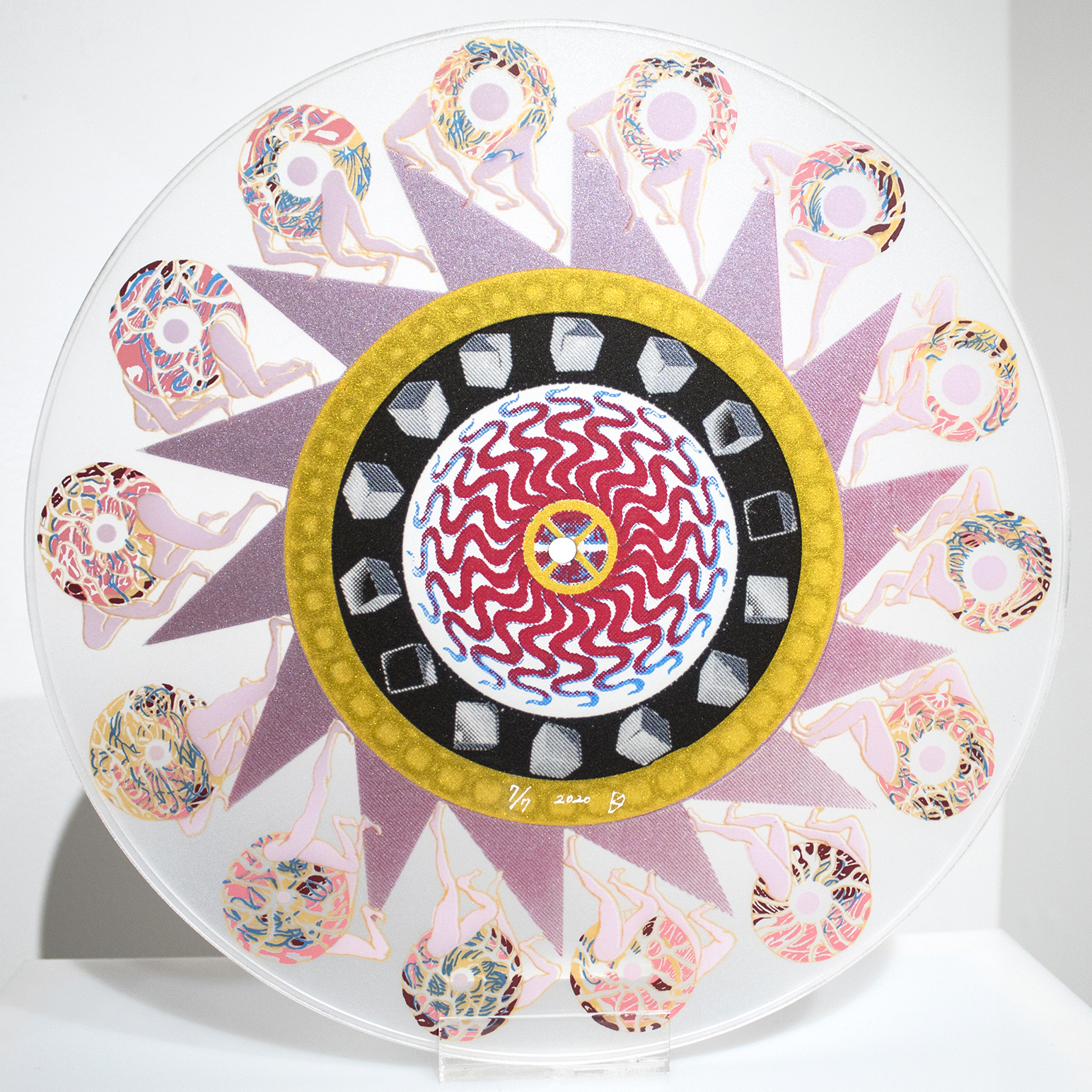

Drawing a parallel to the youth stage in Sphinx's riddle, Four Legs: Placenta depicts the formative forces of human history and culture through a layered metaphor. At the center, a rotating wheel—one of humanity’s earliest and most influential inventions—sets the entire structure in motion. Encircling it is a placenta symbolizing the biological conduit. Rotating boxes on the third layer signifies the transmission of human knowledge through the archive, while the fourth layer, with germinating seeds, symbolizes agriculture. All layers rest upon a spinning saw blade, which represents industrial development. Four-legged creatures composed of fat, blood vessels, and flesh move forward endlessly, like Sisyphus, perpetually turning the wheel of human culture.
4개의 다리: 태반 (2020)은 4겹의 이미지로 구성되어 있다. 바깥에서부터 지방, 혈관, 살로 이루어진 생물들이 첫 번째 층에서 원을 그리며 한없이 앞으로 나아가고 있다. 두 번째 층에 씨앗이 싹트는 것은 농업을, 세 번째 층에 있는 회전하는 상자는 기록 보관소를 통한 인간 지식의 전달을 의미한다. 중앙의 태반 이미지는 이러한 활동을 가능하게 하는 생물학적 사슬을 나타내고 정 중앙에는 인류의 발명품 중 가장 오래되고 파급력이 큰 바퀴의 이미지가 자리한다. 네 개의 다리: 태반 (2020)은 과거로부터 이어진 아카이브의 전승을 묘사한다.


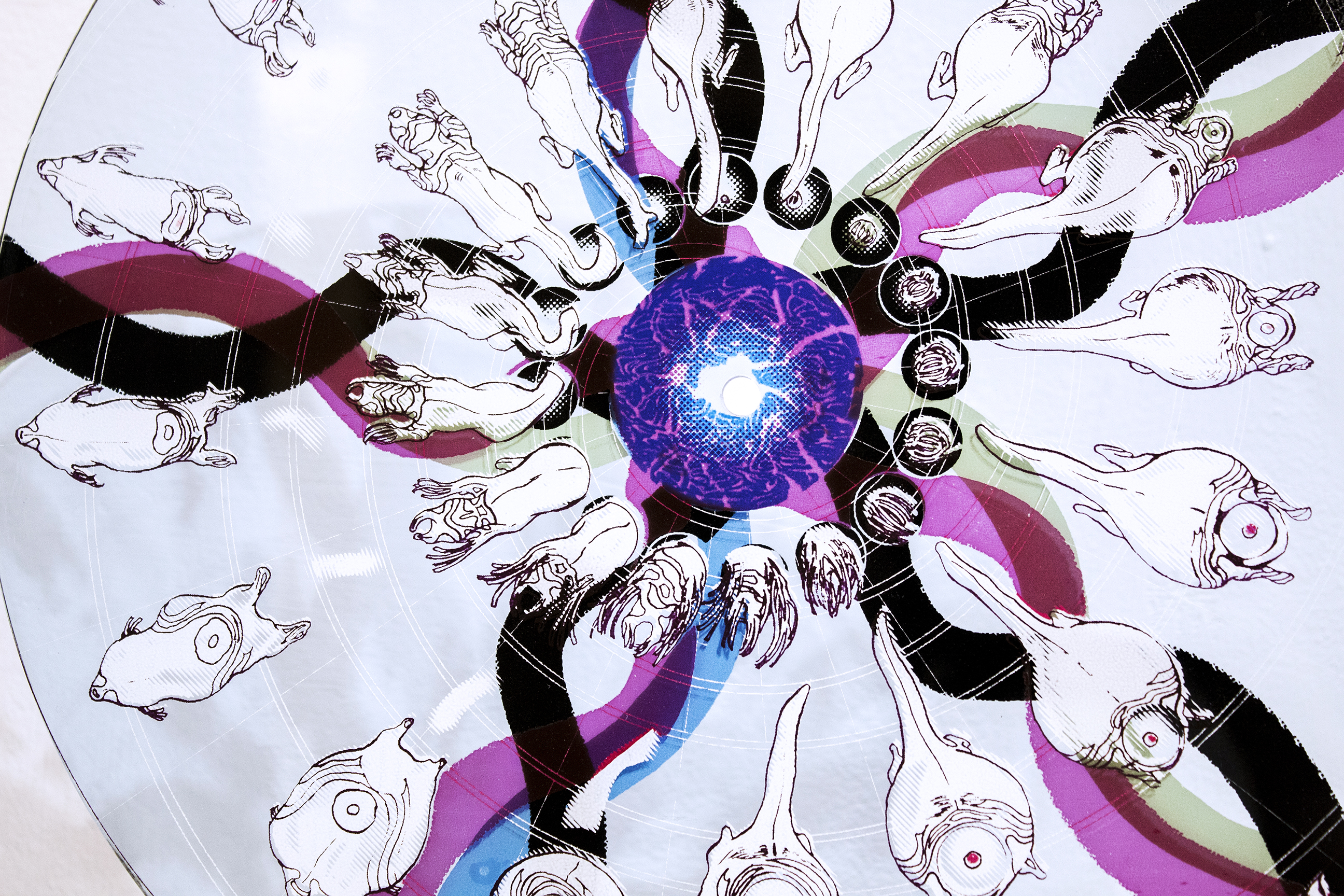



Two Legs: Exodus (2020) is a metaphor for migrant issues. The work depicts speculative creatures that emerge and metamorphose, demonstrating the evolutionary process. The image of transforming animals implies migrants who have asked to adjust to the changing environment. Two Legs: Exodus shows the present situation caused by complex factors such as globalization and climate change.
2개의 다리: 탈출 (2020)은 환경과 난민 문제에 대한 비유이다. 작품은 계속해서 다른 형태로 진화하는 가상의 생명체를 묘사한다. 식물에서 곤충, 도마뱀, 세포, 물고기, 포유류, 새 등으로 변화하는 생명체는 계속해서 새로운 환경에 적응해야 하는 이주민들을 암시한다. 이 가상의 이주민은 인간의 이주 뿐 아니라 환경문제로 인한 동식물의 이주와 변화 또한 상징한다.
